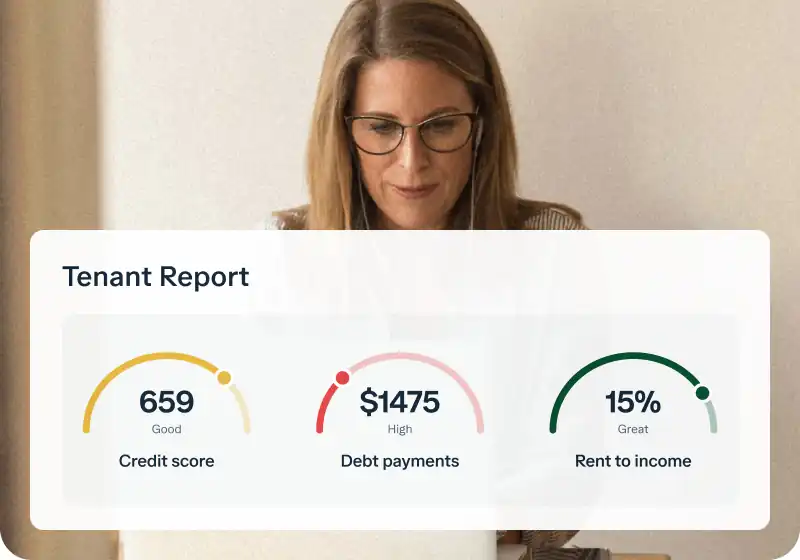Effectively managing the finances of rental properties is crucial for long-term success and profitability. As a landlord, you'll encounter terms like escrow and reserves, which refer to funds set aside for specific purposes. Understanding the different types, legal requirements, and best practices for these funds is essential for compliance and financial health.
Key takeaways
- Security deposit escrow accounts are often legally required to protect tenant funds.
- State laws dictate how security deposits must be held, sometimes requiring separate, interest-bearing escrow accounts.
- Capital and vacancy reserves are funds landlords set aside for future repairs, replacements, and periods without tenants.
- Calculating reserves involves using methods like setting aside months of rent or a percentage of income.
- Proper management of these funds ensures you're prepared for unexpected costs and comply with regulations.
Understanding escrow for rental properties
In real estate, "escrow" generally refers to funds held by a neutral third party on behalf of others until specific conditions are met. For landlords, there are two main contexts where escrow is relevant: security deposits and rent.
What are security deposit escrow accounts?
A security deposit escrow account is a dedicated account used to hold a tenant's security deposit during the lease term. The purpose of a security deposit is to cover potential damages beyond normal wear and tear or unpaid rent after a tenant moves out.
A landlord security deposit is a significant amount, often equivalent to one or two months' rent, but how much a security deposit is usually regulated by state law. It's distinct from a move-in fee vs a security deposit.
While the tenant occupies the property, the funds in the security deposit escrow account legally belong to the tenant, not the landlord. The landlord can only access these funds under specific conditions outlined in the lease security deposit agreement and state law, such as covering repair costs or unpaid rent after the tenant vacates.
This arrangement helps protect the tenant's funds and ensures the landlord doesn't improperly use the money. You might also encounter airbnb deposit practices that have their own rules.
State legal requirements for security deposits
Requirements for handling tenant security deposits vary significantly across U.S. states. Approximately 15–20 states mandated that security deposits be held in escrow or separate accounts as of 2024. Some states, including Connecticut, Delaware, the District of Columbia, Minnesota, Alaska, and Washington, have specific rules for security deposits to be held in escrow or separate accounts.
These laws often prohibit landlords from commingling (mixing) tenant security deposits with their personal or business funds. Many states (including AL, AZ, AR, CA, CO, MS, WV, WI) do not require landlords to keep security deposits in separate escrow or bank accounts, though it's generally recommended best practice. Compliance with these state-specific rules is a critical escrow reserve requirement for landlords.
Tenant deposit interest requirements by state
Beyond holding location, several states require security deposit escrow accounts to be interest-bearing, with the earned interest often belonging to the tenant. States like Connecticut, Alaska, Minnesota, and Washington, D.C. are examples where this is mandated.
Knowing whether escrow accounts earn interest is vital, as landlords may need to calculate and disburse this interest annually or at the end of the lease term. This requirement adds another layer of complexity to managing tenant funds.
Escrow cushion requirements by state
The term "escrow cushion" is more commonly associated with mortgage escrow accounts, where the lender holds funds for property taxes and insurance. This cushion is an extra amount held to cover potential increases in these costs.
For security deposit escrow accounts, state laws typically do not mandate a specific "cushion" in the same way a mortgage lender might. Instead, regulations focus on the amount of the deposit itself (often limited to 1-2 months' rent) and how it's held.
Therefore, there isn't a standard rule on how much escrow cushion is allowed for security deposits; it's about holding the initial deposit amount correctly according to state law.
Managing security deposit escrow
Effective management of security deposit escrow involves careful record-keeping, timely handling of funds, and adhering to legal timelines for returns or deductions. Landlords must track each tenant's deposit separately, especially when managing multiple properties.
At the end of a lease, landlords must follow state laws regarding deductions for damages or unpaid rent.
The remaining balance must be returned to the tenant within a specific timeframe, often with an itemized list of deductions. Using escrow management software can help landlords stay organized, track deposits, calculate interest where required, and comply with state regulations for returns and reporting.
Rent escrow (for repairs)
Rent escrow differs from security deposit escrow and is a legal remedy available to tenants in certain jurisdictions. Rent escrow is a process where a tenant pays their monthly rent to a third party, typically the court, rather than directly to the landlord. This is usually initiated when a landlord fails to make necessary repairs that affect the property's habitability after receiving proper notice.
The funds are held in a court-ordered escrow account until the landlord makes the required repairs. This mechanism is a tenant's way of compelling a landlord to maintain safe living conditions. There are specific reasons to put rent in escrow, and it requires following strict legal procedures. It is entirely separate from the management of security deposits.
Building rental property reserve funds (capital and vacancy)
Beyond the legally mandated handling of security deposits, savvy landlords set aside their own funds in reserve accounts. These are not tenant funds but rather a landlord's proactive financial planning tool. These reserve funds, sometimes broadly referred to as escrow reserves, are crucial for covering future expenses and maintaining financial stability.
What are capital reserves?
Capital reserves are funds designated for major repairs, replacements, and significant property improvements. These are costs beyond routine maintenance, such as replacing a roof, HVAC system, or major appliances. Think of it as saving for the inevitable big-ticket items that come with owning a property.
While common in homeowners associations (HOAs) as an escrow reserve fund, the concept is vital for independent landlords too. These funds ensure you can afford necessary upgrades or fixes without going into debt or depleting your operational cash flow.
A replacement reserve escrow is another term for funds earmarked specifically for replacing aging components. Similarly, while often used in mortgage contexts, having funds set aside for large insurance costs could be thought of as a type of insurance escrow reserve for landlords managing their own finances.
What are vacancy reserves?
Vacancy reserves are funds set aside to cover expenses during periods when your rental property is unoccupied. Even in strong rental markets, there can be times between tenants when you aren't receiving rent.
These reserves cover costs like mortgage payments, property taxes, insurance, utilities, and minor maintenance during that vacant period. Having a healthy vacancy reserve prevents financial strain when rental income temporarily stops.
Why Landlords Need Capital and Vacancy Reserves
Maintaining adequate reserves is fundamental to being a successful, long-term real estate investor. These funds act as a financial cushion, protecting your investment from unexpected costs and income disruptions. Without reserves, a sudden major repair or a prolonged vacancy could quickly turn a profitable property into a liability.
Reserves provide financial stability, allow for planned improvements that can increase property value, and give you peace of mind. They are a crucial part of responsible property financial management, separate from the legal escrow reserve account requirement for security deposits.
How to Calculate Rental Property Reserves
While there's no single escrow reserve calculator that fits all situations, several methods can help you estimate how to calculate escrow reserves.
A common rule of thumb for rental property capital reserves is to set aside funds equivalent to three to six months of rent per unit. Some sources suggest setting aside 6–8% of the monthly rent specifically for ongoing capital reserves. Another approach recommends allocating 10% of rental income or profits to reserves, potentially split between vacancy and capital improvement funds.
The depreciation method involves estimating the useful life and replacement cost of major components and setting aside a prorated amount annually. A more detailed approach is a capital spending study, which is a professional assessment of a property's components and their future repair/replacement needs over a set period.
How Much Escrow Cushion is Allowed / Required
For landlord-managed capital and vacancy reserves, there isn't a legal requirement for a specific "cushion" amount. The amount you set aside is a matter of financial prudence and risk tolerance.
Building up reserves equivalent to several months' operating expenses is a common recommendation for a healthy buffer. This provides a significant cushion against unexpected events like extended vacancies or major repairs.
The recommended reserve amount depends on factors like:
- the property's age,
- condition,
- location,
- and market vacancy rates.
A landlord's escrow reserve requirement isn't legally defined but rather a strategic decision based on sound financial management principles.
Aggregate Reserves Escrow/Cash Basis Escrow Reserve
These terms are more often associated with accounting practices, particularly in larger property management or financial contexts.
"Aggregate reserves" might refer to the total amount held across all reserve funds or properties. "Cash basis escrow reserve" could relate to how these funds are accounted for, focusing on actual cash inflows and outflows rather than accrual methods.
For independent landlords using simpler bookkeeping, the focus is typically on maintaining the physical balance in the reserve accounts, ensuring funds are available when needed.
Best Practices for Managing Rental Reserves
Effective management of your rental property reserves ensures that the funds are available when needed, while potentially earning a return.
Keeping Funds Accessible but Separate
Your reserve funds should be held in separate accounts from your day-to-day operational checking account. This prevents accidental spending and gives you a clear picture of your available reserves. While separate, these accounts should be easily accessible when funds are needed for repairs or during vacancies.
Unlike traditional banking, Baselane’s banking platform allows landlords to create multiple checking and savings accounts for different purposes. You can easily set up dedicated accounts for security deposits (if required by state law and banking practices allow), capital reserves, and vacancy reserves. This helps keep funds organized and prevents commingling.
Regularly Reviewing and Adjusting Reserve Amounts
Rental property expenses and market conditions change over time. It's wise to review your reserve balances and calculations annually. Ask yourself:
- Are property taxes or insurance premiums increasing?
- Is your property aging, potentially requiring larger capital expenditures sooner?
The Role of Property Management Software
Property management software or integrated financial platforms can significantly simplify managing rental reserves. These tools can help you track income and expenses by property, identify potential future costs based on maintenance history, and monitor your reserve account balances.
Using escrow management software or comprehensive property financial software provides better visibility and control over all your rental property finances, including reserves and escrow.
Bottom line
Managing rental properties involves more than just collecting rent; it requires diligent financial planning and adherence to legal requirements. Understanding and correctly handling security deposit escrow accounts is a compliance necessity dictated by state law. Equally important is proactively building and maintaining capital and vacancy reserves to safeguard your investment against unforeseen costs and income gaps.
By separating funds, calculating reserves based on your property's specific needs, and using the right financial tools, you can ensure the long-term financial health and stability of your rental business. Get clarity and control over your rental property finances by exploring platforms designed for landlords.
FAQs
What is an escrow reserve payment?
In the context of rental properties, an escrow reserve payment typically refers to the funds deposited into either a legally required security deposit escrow account or a landlord's self-funded reserve account for future expenses, such as repairs or vacancies.
What does escrow cover for a rental property?
Escrow for a rental property can refer to either a security deposit escrow (covering tenant-caused damages or unpaid rent) or, in some legal processes, a rent escrow (covering rent temporarily held due to a landlord's failure to make necessary repairs).
What is the maximum escrow cushion allowed for security deposits?
For security deposit escrow, state laws regulate the maximum deposit amount (often 1-2 months' rent) rather than specifying an "escrow cushion" like in mortgage accounts. Legal requirements focus on how the total deposit is held.
What is a replacement reserve escrow?
Replacement reserve escrow refers to funds set aside, typically in a separate account, specifically for the future replacement of a property's major components, such as roofing, HVAC systems, or appliances. It's a form of capital reserve.
Are there escrow reserve requirements for landlords?
Yes, there are often legal escrow reserve requirements for landlords regarding security deposits, mandating that they be held separately or in specific escrow accounts per state law. There are no legal requirements for capital or vacancy reserves; these are best practices for financial stability.














.jpg)

